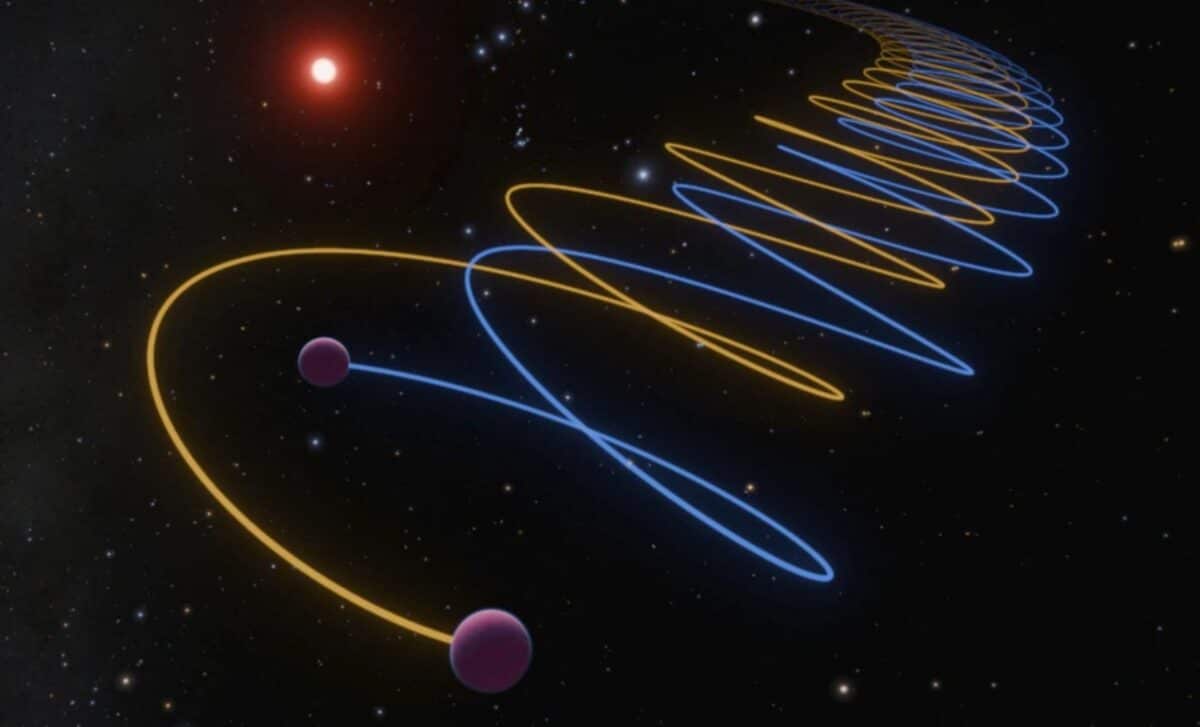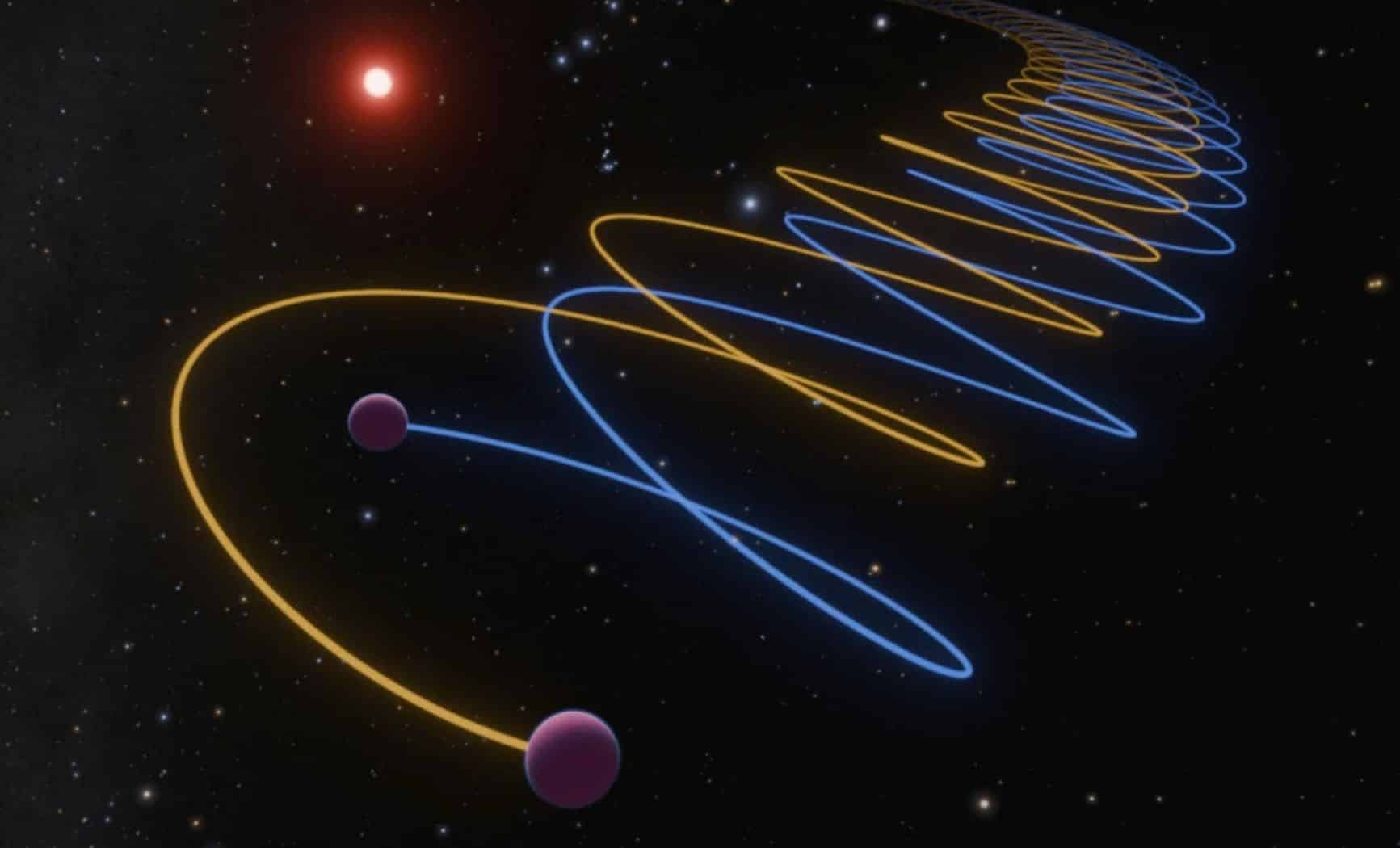Scientists have discovered that Gliese 229B, previously believed to be a single brown dwarf, is actually a pair of closely orbiting “failed stars.” This revelation, made after nearly 30 years of study, resolves long-standing mysteries about the object’s unusual dimness and provides new insights into how such binary brown dwarf systems form. The finding marks an exciting step forward in our understanding of these unique celestial objects.
Decades-Old Mystery Solved as Gliese 229B Is Revealed as a Binary System

Astronomers have made a surprising discovery about Gliese 229B, a well-known brown dwarf first identified nearly 30 years ago. Once considered a single "failed star," scientists have now revealed that Gliese 229B is actually a pair of closely orbiting brown dwarfs. This groundbreaking finding, published in Nature, resolves longstanding questions about the object's unusual characteristics and provides new insight into the formation of such binary systems.
Brown Dwarfs: Failed Stars with A Swist
Brown dwarfs are often referred to as "failed stars" because, unlike regular stars, they do not have enough mass to sustain hydrogen fusion in their cores. This places them in an intermediate category between stars and giant planets. Discovered in 1995, Gliese 229B was the first known brown dwarf, making it a landmark discovery that bridged the gap between stars and planets.
For decades, however, scientists noticed something odd about Gliese 229B—it appeared dimmer than expected for its mass, which led to speculation that the object might not be a single body. Now, thanks to observations made using the Very Large Telescope (VLT) in Chile, astronomers have confirmed that Gliese 229B is actually two brown dwarfs—Gliese 229Ba and Gliese 229Bb—orbiting each other at a distance of just 3.8 million miles, or 16 times the distance between Earth and the Moon.
“This discovery that Gliese 229B is binary not only resolves the recent tension observed between its mass and luminosity but also significantly deepens our understanding of brown dwarfs,” said Dimitri Mawet, a professor of astronomy at the California Institute of Technology (Caltech) and a co-author of the study.
A First-of-its-kind Brown Dwarf Binary System
What makes this discovery particularly exciting is how close the two brown dwarfs are to each other, orbiting one another every 12 days. While astronomers have previously identified other brown dwarf pairs, Gliese 229B is the first known example of a tight brown dwarf binary system, where two such objects are so tightly bound that they were previously indistinguishable.
According to Rebecca Oppenheimer, co-author of the study and a researcher at the American Museum of Natural History, the duo's close orbit “shows you how weird the universe is, and how different solar systems are from our own.”
The two objects, now labeled Gliese 229Ba and Gliese 229Bb, have masses of approximately 38 and 34 times that of Jupiter, respectively. This finding has important implications for how astronomers understand the formation of brown dwarfs and the role of gravitational forces in creating such tightly bound pairs. The pair orbits a red dwarf star known as Gliese 229, located 19 light-years away from Earth.
Unraveling the Mystery
The discovery also helps explain why Gliese 229B has puzzled scientists for so long. For nearly three decades, the object's faint luminosity did not match its calculated mass. Using advanced instruments like the GRAVITY interferometer and the CRIRES+ spectrograph at the VLT, astronomers were finally able to resolve the light from the two objects and confirm their binary nature.
“Gliese 229B was considered the poster child for brown dwarfs,” said Jerry Xuan, lead author of the study from Caltech. “We now know that it’s not one object, but two, and we simply couldn’t probe separations this close until now.”
This breakthrough offers new opportunities for studying other brown dwarfs that may also be part of hidden binary systems. Xuan emphasized the importance of this discovery, suggesting that the identification of Gliese 229B as a binary system "bodes well for ongoing efforts to find more" such pairs in our galaxy.
Implications for Future Research
The revelation of Gliese 229B’s binary nature opens up new avenues for exploring the formation and evolution of brown dwarfs, particularly those that form in pairs. Astronomers hope that with future observations using instruments like the Keck Planet Imager and Characterizer (KPIC), they can find more such systems and deepen their understanding of how these objects interact and evolve over time.
“This is the most exciting and fascinating discovery in substellar astrophysics in decades,” said Oppenheimer, underscoring the importance of this finding for both the study of brown dwarfs and our broader understanding of planetary and stellar systems.
As astronomers continue to probe the universe for hidden binaries, the discovery of Gliese 229Ba and Gliese 229Bb demonstrates that even well-studied objects can still hold surprises, offering new insights into the cosmos.



